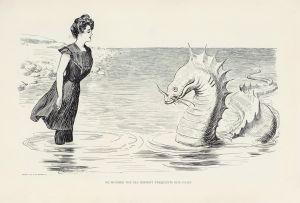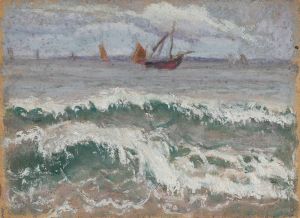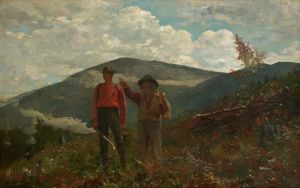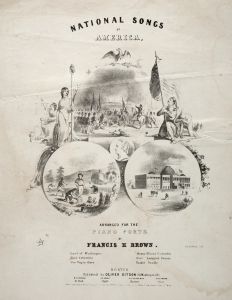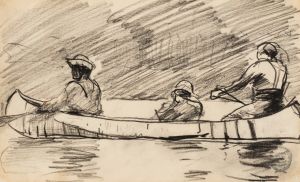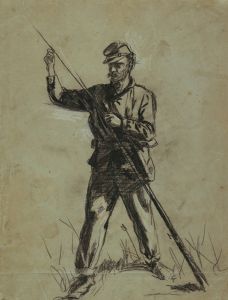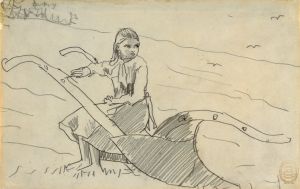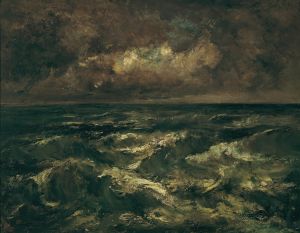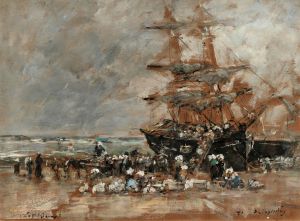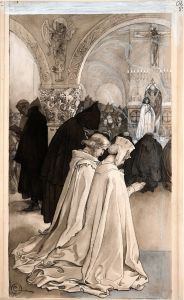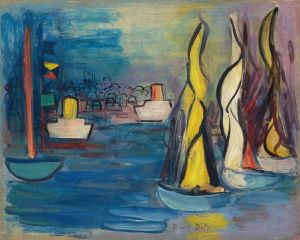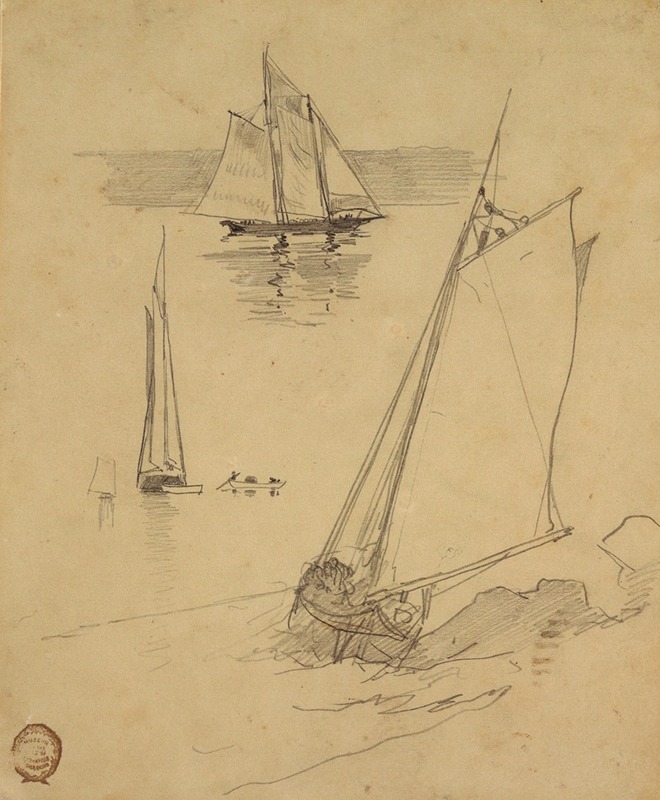
Three Sketches of Schooners
A hand-painted replica of Winslow Homer’s masterpiece Three Sketches of Schooners, meticulously crafted by professional artists to capture the true essence of the original. Each piece is created with museum-quality canvas and rare mineral pigments, carefully painted by experienced artists with delicate brushstrokes and rich, layered colors to perfectly recreate the texture of the original artwork. Unlike machine-printed reproductions, this hand-painted version brings the painting to life, infused with the artist’s emotions and skill in every stroke. Whether for personal collection or home decoration, it instantly elevates the artistic atmosphere of any space.
"Three Sketches of Schooners" is a watercolor painting by the American artist Winslow Homer, created in 1880. Homer, renowned for his marine subjects and mastery of watercolor, captures the essence of maritime life in this work. The painting features three separate sketches of schooners, a type of sailing vessel that was commonly used during the 19th century for both fishing and trade.
Winslow Homer was born on February 24, 1836, in Boston, Massachusetts, and he began his career as a commercial illustrator before transitioning to painting. He is considered one of the foremost painters in 19th-century America and a preeminent figure in American art. Homer's work often depicted the American landscape and seascape, reflecting his deep interest in the natural world and human interaction with it.
"Three Sketches of Schooners" exemplifies Homer's skill in capturing the dynamic and often harsh realities of the sea. The watercolor medium allows for a fluidity and spontaneity that is well-suited to the depiction of water and sky. In this painting, Homer uses a limited palette and loose brushwork to convey the movement and atmosphere of the maritime scene. The schooners are depicted with a sense of immediacy and energy, suggesting the ever-changing conditions of the sea.
The composition of the painting is divided into three distinct sections, each focusing on a different schooner. This tripartite structure allows Homer to explore various perspectives and aspects of the vessels. The schooners are shown in different states of sail, with their masts and rigging rendered in fine detail. The surrounding water and sky are depicted with broad, sweeping strokes, creating a sense of depth and movement.
Homer's interest in maritime subjects was influenced by his time spent in coastal communities, particularly in Gloucester, Massachusetts, and Prouts Neck, Maine. These locations provided him with ample opportunities to observe and sketch the daily activities of fishermen and sailors. His firsthand experience and keen observation skills are evident in the authenticity and vitality of his marine paintings.
"Three Sketches of Schooners" is part of a larger body of work that includes other notable marine paintings such as "Breezing Up (A Fair Wind)" and "The Gulf Stream." These works collectively highlight Homer's fascination with the sea and his ability to capture its beauty and power. Homer's marine paintings have been celebrated for their technical excellence and emotional depth, earning him a lasting legacy in American art history.
Today, Winslow Homer's works are held in major museums and collections around the world, including the Metropolitan Museum of Art in New York, the National Gallery of Art in Washington, D.C., and the Museum of Fine Arts in Boston. "Three Sketches of Schooners" continues to be appreciated for its artistic merit and its contribution to the rich tradition of American marine painting.





